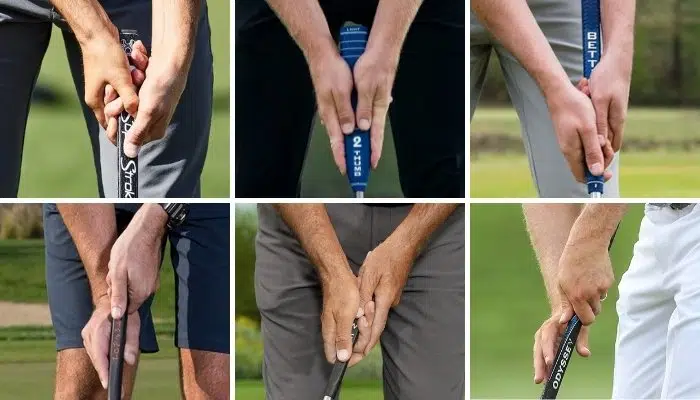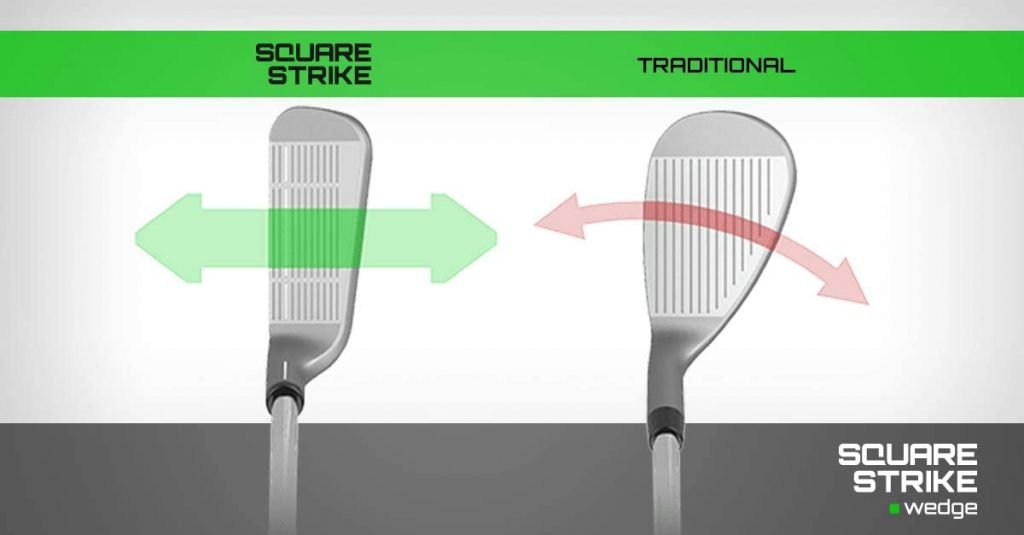When you start playing golf regularly, the first significant milestone you aim for is undoubtably breaking 100.
Cracking triple figures is the Holy Grail for beginner golfers, and for many – at least for the first few months – is can seem like an unachievable goal that is built up to be this huge, momentous occasion.
But when you crunch the numbers behind what it takes to break 100, you’ll actually realise it’s very doable – even if you have an ordinary swing.
To break 100 in golf, all you need is 11 bogeys, 5 double bogeys and 2 triple bogeys if playing a standard 18-hole, Par 72 course. This can largely be achieved by keeping the ball in play (avoiding out-of-bounds and water hazards) and keeping three-putts to a minimum.
When I first took up the game of golf, cracking that elusive century didn’t happen for many months.
I built it up in my head as this golden number and the more pressure I put on myself to perform every time I teed it up, the worse I played.
It’s probably a story that many beginner golfers can relate to.
It wasn’t until it dawned on me that I had 27 ‘bad’ shots up my sleeve every round in order to shoot 99 – and finally break 100 – that the weight was lifted from my shoulders and I figured out a gameplan that hasn’t seen me come close to posting a three-figure score since.
In this article, I’m going to explain each of those 13 steps in more detail and reveal why incorporating them into your game will see you breaking 100 the next time you tee it up.
Table of contents
The 13 steps to breaking 100 in golf
For beginner golfers or players with high handicaps, lowering your score comes down to a few key things: hitting the ball longer; keeping the ball in play; getting the ball onto the green in three shots or less; and limiting yourself to only a few three-putts per round.
That may seem obvious, but many players don’t actually have a clear strategy on how to achieve this.
Below, I’ve provided an in-depth, easy-to-follow breakdown of how you can methodically start breaking 100 regularly without a significant overhaul of your swing.
1. Use the right equipment
When you decide to play golf for the first time, you’ll often grab the first set of clubs you can find – it might be an old set gathering dust in your parents’ shed, or maybe you’ve borrowed some from a friend.
While using a dated, basic set can be OK to begin with, once you’re truly serious about committing to golf, it’s time to start thinking about buying a better kit.
You don’t have to break the bank – but technology has advanced so much that even a cheap, new set like the Wilson Complete Golf Set will perform significantly better than one that’s over a decade old.

Play with a high-lofted driver
As a beginner, you want a driver with no less than 10.5 degrees loft and can even experiment with as much as 15 degrees if you wish.
The reason is high-lofted drivers are easier to get into the air, but are also more controllable than those with 8 or even 9 degrees of loft (just as a wedge is far easier to hit straight than a long iron).
The aim of the game when attempting to break 100 is keeping the ball in play, so using a driver with 10.5 degrees of loft, or more, will help you do this.
Something like the Callaway Big Bertha B21 (my top pick for beginners), Cleveland Launcher XL Lite (my most forgiving pick) or the Wilson Staff D9 (my best value pick) is a great place to start.
You can check out our lists of the best drivers for high handicappers and also best drivers for seniors by clicking the links.
Use irons that are forgiving
The last thing high-handicap golfers should be doing is learning to play the game with blades – hell, even less and less professional golfers are using them.
Instead, beginners are better served by using game improvement irons as they have larger clubheads, thicker soles and are designed to launch the ball into the air far easier.
The TaylorMade SIM Max 2 clubs are a brilliant, forgiving set of irons; but if you want something a little more budget-friendly, the Cobra T-Rail or Wilson Launchpad irons could also be up your alley.
You can check out our full review of the best irons for high handicappers here.
Swap long irons for hybrids/fairway woods
Long irons are arguably the hardest clubs to hit for amateur golfers – especially those struggling to break 100 – due to their low loft and thin clubheads.
So, instead of battling your way around the course, it could be a good idea to swap them out for a hybrid or fairway wood.
These clubs have wide, forgiving soles designed to glide through the rough (which is, ironically, where a lot of weekend warriors spend a lot of time) and launch the ball into the air with ease.
You can check out our complete review of the best hybrids on the market here to give you an idea of the options available.

Invest in a decent putter
This probably isn’t a necessity at first, but once you’ve built the rest of your bag, investing in a putter is a good idea if your budget allows.
It’s likely more than a third of your strokes will be made on the greens, so it makes sense then to use a club that feels comfortable in your hands (as this will likely lead to better performance).
We’ve written some articles explaining the difference between toe hang and face balance putters, and also whether removable putter weights are worth it, that I recommend you read.
Don’t cheap out on golf balls
It’s natural to buy the cheapest possible golf balls when you first begin playing, but you’ll soon find that they perform little better than rocks.
Rather than wasting your time with some Wilson Staffs, spend an extra $10 or so and grab yourself some Srixon Soft Feels, or similar, as they’ll give you a lot more feel (especially around the greens).
We’ve written a review of the best golf balls for high handicappers here that I definitely recommend you check out.
2. Get your fundamentals sorted
Now that you’ve got the right clubs at your disposal, the next step is getting your fundamentals sorted.
A good set-up comes down to a few key elements: grip, posture, ball position and alignment, and I’ll explain why below.
A good grip is important
If you take a look at high-handicap players, many of them have some pretty ordinary grips – usually they’ll be too weak, too strong or, even worse, split-handed (the latter is a true sign of a golfer who needs some lessons).
Using a basic, cheap training aid like the SKLZ Grip Trainer Attachment is an easy way to groove a neutral grip – simply slip it over the handle of your club, and wrap your hands around the moulds to place them into the correct position.
We’ve written more about the importance of a good grip here, and correct grip pressure here (hint: you don’t want to strangle the club).

Practice a good posture
Amateur golfers too often stand excessively far from the ball at address, or are way too hunched over – neither of which lend themselves to making decent, consistent contact.
Instead, you should aim to keep your armpits, kneecaps and tops of your feet aligned over one another as this will put you into a balanced, powerful position.
I’ve explained this more in another article here.
Use the right ball position for each club
The longer the club, the wider your feet need to be apart.
It’s a basic concept that many beginners aren’t aware of, but it can drastically improve your ball-striking.
Read here for our full explanation of where your ball should be positioned for each club in your bag.
Align yourself to target
A lot of the time, amateur golfers will think they’ve hit a bad shot way left or right of target, when in fact they hit it dead straight – they simply weren’t aligned to their target correctly.
Alignment is one of the biggest contributors to wayward shots, such as hooks and slices, and getting it correct can dramatically tighten your shot dispersion.
Read more about aligning yourself to target here, and how to focus on your target here.
3. Learn to make consistent contact
This may seem obvious, but hear me out.
Golfers who struggle to break 100 have one thing in common – regular duffed shots. You know, the ones that travel only a few metres from where you last hit from.
Reducing the number of these round-killers can see your scores plummet.
It matters little if you’re blazing the ball from one side of the fairway to the other; so long as you are advancing it a decent distance each time, the better chance you have of breaking 100.
There are some easy things you can do to start finding the middle of the club more often, as I’ve outlined below.
Find your own swing and practice it often
Beginner golfers can get so fixated on finding the ‘perfect swing’ that it can actually do them harm when it comes to shooting low.
Forget about recording your swing for the time being: just find one that you can repeat more times than not, and one that allows you to find the centre of the clubface somewhat consistently.
I’d definitely recommend buying a practice net that you can hit balls into at home – it doesn’t matter that you can’t see the flight; all that’s important is that you’re making decent contact and reducing the chances of duffed shots.
Either that, or try to visit your nearest driving range once a week.

Don’t overswing – tempo is key
So many high-handicappers try to kill the ball when they first take up golf, almost to the point that they swing themselves off their feet.
Instead, try swinging at 80 percent for a while; you’ll likely find your balance is a lot better, enabling you to find the middle of the clubface more regularly.
A great training aid to practice tempo and rhythm is the Lag Shot Training aid, which is a specially-designed club with an ultra-flexible shaft that forces you to swing easy and load the club correctly in your backswing in order to hit the ball straight.
It comes in driver, 7-iron and wedge, allowing you to actually practice hitting proper shots.
4. Hit driver less off the tee
While you need to learn to hit driver if striving to be a single-figure player, the big stick isn’t required if breaking 100 is your goal.
For high-handicappers, driver can be more hassle than it’s worth and lead to huge scores if it starts misbehaving.
Given cracking triple figures can largely be achieved by keeping the ball in play, it makes sense then to take less club off the tee. Below are some good substitutes for driver.
Use your 3-wood more often
The moment I started taking 3-wood off the tee more often, the moment my scores instantly began to drop.
I absolutely love my TaylorMade SIM Max 3-wood; it goes plenty far enough and is far easier to control than my driver, meaning I split more fairways and give myself a lot better looks into greens.
You, too, can benefit from leaving your driver at home and using 3-wood instead: and I’ve written a complete guide on how to hit it consistently here.
Trying hitting a hybrid
If you don’t have a 3-wood, or simply aren’t comfortable using it, then a hybrid can be your next-best substitute for driver.
It’s a super easy club to hit, still gives you enough length off the tee to allow you to reach the green in regulation, but typically will curve less through the air than your driver will.
I use a model similar to the Callaway Apex Pro (albeit, an older model) and it’s without doubt my favourite club in my bag.
Read our guide on how to hit a hybrid here, or check out our top picks for hybrids here.

Don’t be afraid to use an iron
If you are really, really struggling to find fairways with regularity, don’t be scared to drop back to a mid-iron off the tee.
Remember, when breaking 100, all you need are 11 bogeys, 5 double bogeys and 2 triples – so if it takes you three swings of your 6-iron to get to the green, who cares?
There are no pictures on the scorecard, and if you can hit most greens in three shots using a mid-iron – rather than teeing off for three after smoking your driver out of bounds – then that’s the better choice.
5. Leave yourself full swings into greens
If you think high-handicap players burn strokes off the tee, then it’s nothing compared to how many they waste around the greens.
There are few things weekend warriors hate more than awkward 100-yard (91-metre) shots into the green that require finesse or a three-quarter swing – largely because they don’t have the confidence or skills yet to execute them consistently.
A way to overcome this is to play the hole backwards; for example, if you’re faced with a 390-yard (356-metre) Par 4, work out what yardage and club you’d like to have into the green before teeing off.
What’s the point of hitting driver 220 yards, 6-iron 160 yards, only to be left with an awkward 10-yard pitch into the green? Why not just hit three full 8-irons 130 yards each?
Remember, the goal is to break 100, not to impress your mates and swallowing your ego and treating some longer Par 4s like they’re Par 5s can help you reduce the number of blowout holes you have each round.
6. Find a reliable club for chipping
Despite putting measures in place to limit the number of difficult chips you’ll face per round, the reality is you’ll still encounter plenty.
A big mistake amateurs make is thinking they’ve got the short game of Phil Mickelson and biting off more than they can chew around the greens – leading to thinned or fat chips that will slowly blow your score out without you even realising.
When attempting to break 100, the goal is to get the ball onto the green in one shot when chipping. It’s as simple as that.
Rather than using a different club each time (swapping between your 50-degree, 54-degree, 58-degree or 60-degree wedge), choose one club and practice with it until you can chip it without fear each time.
We’ve listed our top picks for wedges here, but if you want an even easier option, I’d highly recommend trying the Square Strike Wedge (which we think is the best chipper on the market – and yes, it’s legal to use).
Reducing the variables is an important step to keep those big scores to a minimum.

7. Utilise the bump and run
One of the hardest shots in golf is the high chip or flop, but many amateurs – especially those who watch a lot of professional golf on TV – think they possess the skills to pull them off.
Unfortunately, in most cases, they don’t; hence the reason why many struggle to break 100.
Rather than attempting these difficult aerial chip shots which, when they go wrong, can not only be demoralising to your confidence but incredibly damaging to your score – we all know the feeling of blading a chip through the back of the green – it’s better to use an easier method.
That’s where the bump and run comes into play.
The bump and run involves keeping the ball low and getting it rolling on the green as quickly as possible, as the less time the ball spends in the air, the less time it has to go off-line.
As we’ve explained in another how-to guide, the bump and run is best played using a 7-iron, 8-iron or chipper club, which are much more forgiving than a wedge and are less likely to have their leading edge dig into the turf (leading to fat shots that go nowhere).
8. Master the art of lag putting
Once you’ve landed your ball safely on the green, the aim of your next shot is to lag your putt as close to the hole as possible.
Sometimes they may drop (happy days when they do), but if breaking 100 is the aim, then the number one goal isn’t one-putting everything – it’s two-putting as much as possible.
Below are some steps you can take to improve your lag putting.
Choose a grip technique and stick to it
There are so many putting grip techniques to choose from: conventional, left-hand low, the prayer, the claw, arm-lock, arm-lock with claw, and broomstick (I’ve explained each of them in more detail here).
One is not better than the other – what’s important is that once you’ve found a grip you’re comfortable with, you stick to it.
This will help you become more consistent on the greens (rather than wasting time chopping and changing your putting technique) and have a positive affect on your lag putting.
Learn how to read greens
Green reading has a pivotal role when it comes to lag putting – and can be the difference between leaving yourself looks inside six feet, or outside six feet (I know which one I’d prefer).
Simple things like reading a putt from both ways can have a huge effect on your scoring, but is something many amateurs don’t spend enough time on.
We’ve written a detailed article on how to read greens here that I certainly recommend you read.

Try plumb-bobbing
Plumb-bobbing is somewhat of a controversial topic when it comes to green reading techniques, but some golfers absolutely swear by it.
There’s no harm in giving it a go, and you may find it helps you read the break better – which will only improve your lag putting.
Check out more on plumb-bobbing, including how it works, here.
Get your putter alignment right
Aligning yourself correctly is one of the most important, if not the most important, part of good lag putting.
If you can’t hit your spot, the chances of nestling the ball close to the hole and setting up an easy two-putt greatly diminishes.
When out on the course during a competition round – outside the controlled setting of a putting green, for example – players are faced with different reads on almost every putt, which can wreak havoc with their when it comes to alignment.
If you want to break 100, you need to ensure your alignment is correct every time you line up a putt – and I’ve explained some easy ways to do that in another article here.
9. Limit your number of three-putts
This one is pretty self-explanatory, but it’s one of the easiest ways to shave strokes off your score and is key to breaking 100.
Obviously, it’s unlikely as a high handicapper to go through an entire 18-hole round without a three-putt, but keeping them to a minimum has to be the goal (and lag putting, as described earlier, is crucial to doing so).
There are some other things you can do to reduce your number of three-putts, which I’ve detailed below.
Arrive early and putt before your round
Setting your alarm just 30 minutes earlier could be the difference between breaking 100 or not.
If you’re serious about cracking three figures for the first time, arrive at the course with enough time to hit the putting green – where you can loosen up and get a feel for the slope and speed of the greens before you tee off.
It may even be worth investing in a cheap device like a putting mirror or putting gates, which you can use to even further hone your stroke on the practice green ahead of your round (we’ve detailed our full list of top putting training aids here).
Doing this will definitely reduce your number of three-putts on the course.

Invest in an indoor putting mat at home
Do you struggle to find time to get to the course and practice? Well, you may benefit from buying an indoor putting mat to use at home.
These training aids aren’t expensive (we’ve listed our top picks here) and they let you get plenty of repetitions in at all times of the day.
The more practice you can squeeze in at home, the better you’ll perform on the greens on gameday.
10. Don’t waste shots in bunkers
Bunkers give most high handicappers nightmares, as getting stuck in one can quickly see them rack up shot, after shot, after shot and destroy their hopes of breaking 100 in the space of minutes.
But bunkers shouldn’t be feared and I’ve written a complete step-by-step guide you can follow that will help you escape the sand in one shot, every single time.
Remember: when trying to break 100, you don’t need to be stiffing your bunker shots to one foot from the flag; you simply want to get it back onto grass in one shot.
11. Use smart course management tactics
When you strip everything else away, golf is all about minimising your mistakes – if you can do this, breaking 100 becomes a breeze.
Course management is an integral part of the game, but one that many high handicappers or beginners often neglect.
Below are some simple strategies you should be using if you’re serious about shooting in the 90s.
Aim for the middle of every green
While Tiger Woods may be able to go firing at tucked pins, remember – you are not Tiger Woods. Hell, you’re not even Charlie Woods.
Aim at the centre of the green for every one of your approach shots as this will give you the greatest margin for error (and reduce your chances of ending up in a greenside bunker or hazard).
Just get the ball onto the putting surface and back yourself in with the flat stick.
Take your medicine and know your limitations
Sure, Phil Mickelson may be able to hit driver out of the long rough through a forest of trees, but remember – you are not Phil Mickelson.
Repeat these words after me: If in doubt, punch out.
This aim of breaking 100 is to get the ball back to the fairway as quickly and safely as possible – rather than chewing up two or three strokes trying to split a one-yard gap between the trees.
If this means taking a wedge and chipping the ball out sideways onto the short grass, so be it.
As a high handicapper, you shouldn’t be trying to pull off the miracle escape – 99 times out of 100 it’ll only end in disaster.

Club up when hitting into the wind
This is a common mistake many golfers make, regardless of their playing ability.
We all have egos and think we can find an extra 10 or 20 percent of power in our swing when faced with a headwind.
As I’ve explained in another article, hitting the ball harder into the wind will only impart more spin onto the ball and actually cost you distance.
Instead, take an extra club and swing easy – you’ll find it produces much better results.
Keep the ball in play and away from hazards
The aim of the game when trying to break 100 is to keep the ball in play at all costs.
This means taking less than driver off the tee; aiming well away from hazards; and steering clear of any out of bounds fences.
Before every shot, identify the danger and select the club that is least likely to get you into trouble (e.g. hitting an iron off the tee rather than driver when faced with a water hazard close to the fairway).
Doing this will help you save valuable strokes.
12. Play with better golfers and learn from them
The saying ‘you are what you eat’ can loosely be applied to golf in that ‘you are who you play with’.
If you’re a 30 handicapper who only plays with other 30 handicappers, chances are you’ll stay at that level for longer than if you were to regularly play with a 7 handicapper.
While playing the odd practice round alone can be beneficial, pairing up with better golfers is a great way to lower your scores faster – you’ll pick up great tips and tricks and observe how they approach each hole, which you can then apply to your own game.
If you’re serious about breaking 100, start playing with golfers who do it regularly and it won’t be long until you start doing it too.
13. Don’t count your score and have fun
When setting yourself a target like breaking 100, you can get so fixated on the score that it becomes a burden – and saps all the fun out of your round.
Focusing on your score puts unnecessary pressure on you to perform and will increase the chances of you having ‘blow-up holes’ – where your brain implodes from anxiety and leads to a really poor shot.
At the end of the day, golf is meant to be enjoyable; so, next time you tee it up, apply all the tips above but don’t count your score up until you’re walking off the 18th green.
The end result might pleasantly surprise you.

Other Frequently Asked Questions (FAQs)
What percentage of golfers can break 100?
Anywhere between 2.3 and 5.7 percent of male golfers will never break 100, based on their average handicaps. For women, anywhere between 30 and 40 percent of players will never break 100 based on their average handicaps. The majority of golfers over time will, however, break 100.
Golfing Focus have provided an easy breakdown of the percentage of golfers in the 30+ handicap bracket in the United States, Australia and United Kingdom (which, when applied to a Par 72 course would be in excess of 100 strokes per round):
Australia
- Male golfers with a 30+ handicap: 5.7 percent
- Female golfers with a 30+ handicap: 33.6 percent
United States
- Male golfers with a 30+ handicap: 2.3 percent
- Female golfers with a 30+ handicap: 30.1 percent
United Kingdom
- Male golfers with a 30+ handicap: 2.4 percent
- Female golfers with a 30+ handicap: 42.1 percent
Is it hard to break 100 in golf?
Breaking 100 in golf is easy once you become a consistent ball-striker and use good course management. The majority of golfers who have played the game longer than six months – and dedicated time to practicing their swing, short game and putting – will have broken 100.
While cracking three figures may seem like an impossible goal when first starting out, applying all the advice detailed above in this article will see most players shoot in the 90s sooner rather than later.
How long does it take to break 100 in golf?
Beginner golfers can break 100 in a matter of weeks if they dedicate time to practicing at least once every few days. If you can learn to make decent contact with the ball; keep the ball in play; chip somewhat consistently; and develop lag putting, it won’t be long before you’re posting scores in the 90s.
How long it takes you to break 100 comes down to one thing only: commitment to practice.
If you’re someone who doesn’t practice regularly, it’s going to take longer to crack triple figures than someone who practices a few times a week.
Only you can control how quickly you improve at golf.
Final message
Breaking 100 is the Holy Grail for golfers who are new to the game.
While it can seem like an insurmountable task, applying the principles and advice I’ve detailed in this article will take you a long way towards achieving your goal.
I remember the sense of accomplishment of breaking 100 for the first time, and hopefully the tips I’ve provided above can help you enjoy that feeling of achievement too.

